
Capital of the Samoan archipelago

Apia marks the ends of the earth, GMT plus thirteen hours – this is the first place to see in the new year, having swapped from the other side of the international date line in 2011, after being always the last place. Samoa‘s capital is refreshingly small, situated on the north side of the smaller Samoan island of Upolu. Beyond the bustle of the market place area and a couple of streets in the centre, it’s all pretty laid back.
Probably one of the quietest capital cities I have ever visited, on a par with Vientiane, Apia was less a city and more a simple collection of buildings at the edge of the rainforest. The international airport is some distance away, as was my hotel, so I found myself passing through a couple of times, and seeking out the sights of interest for a diverting afternoon.
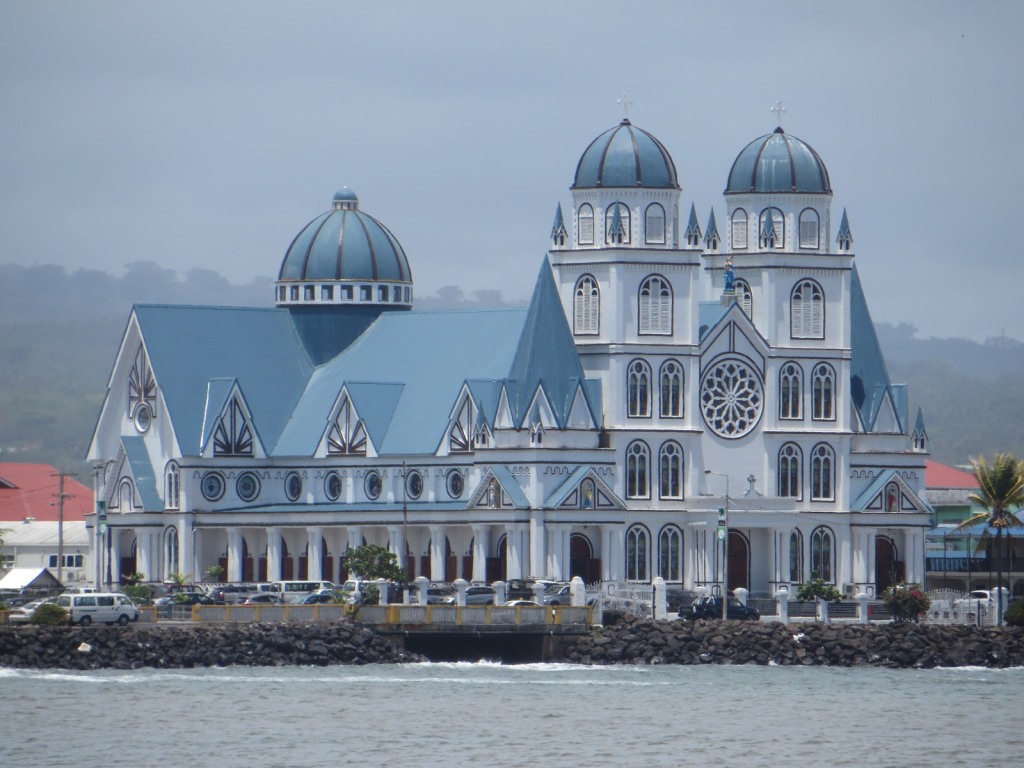
Apia’s cathedral was originally built in the 19th century, but then rebuilt in 2014 following earthquake damage.
Inside, the cathedral is clad with beautiful tropical hardwood, hopefully sourced locally.
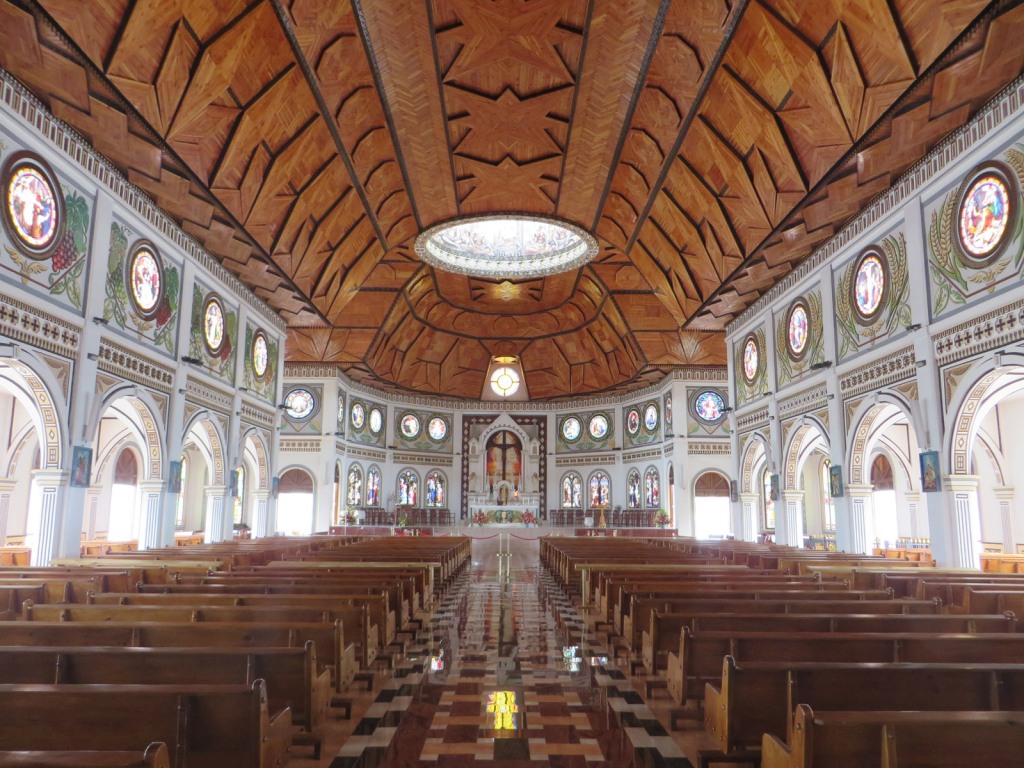
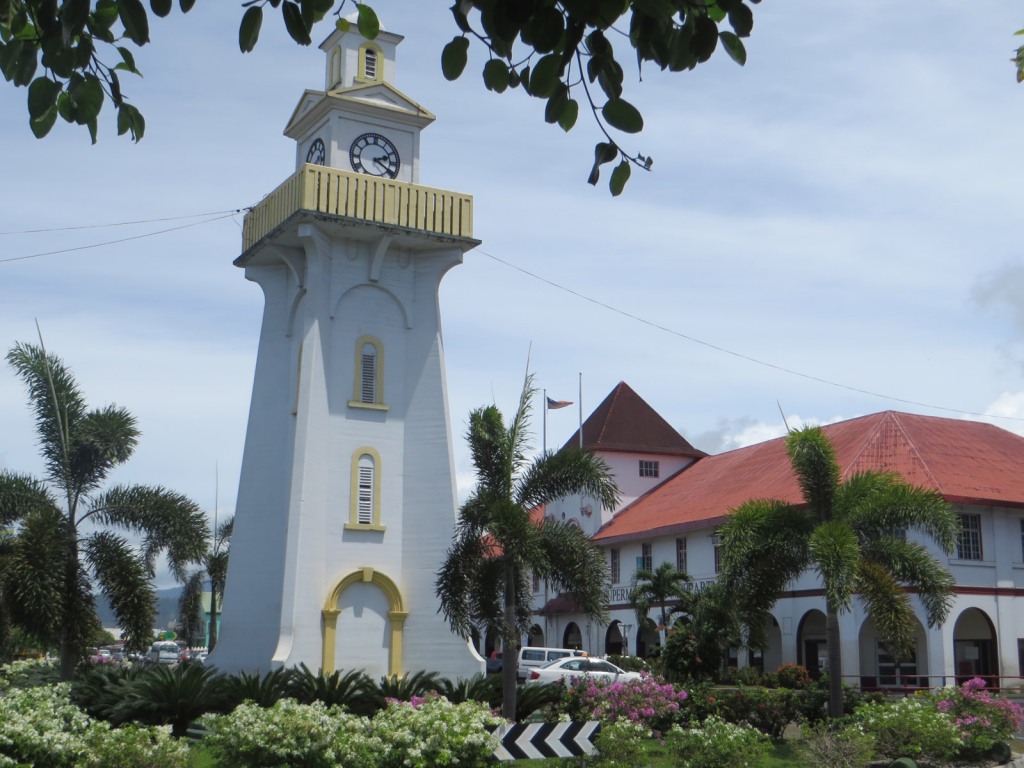
The de facto centre of Apia is the clock tower, meeting point and adorner of many local post cards.
Samoan buses are among the most colourful I’ve seen, so I had to check them out all lined up at the bus station.
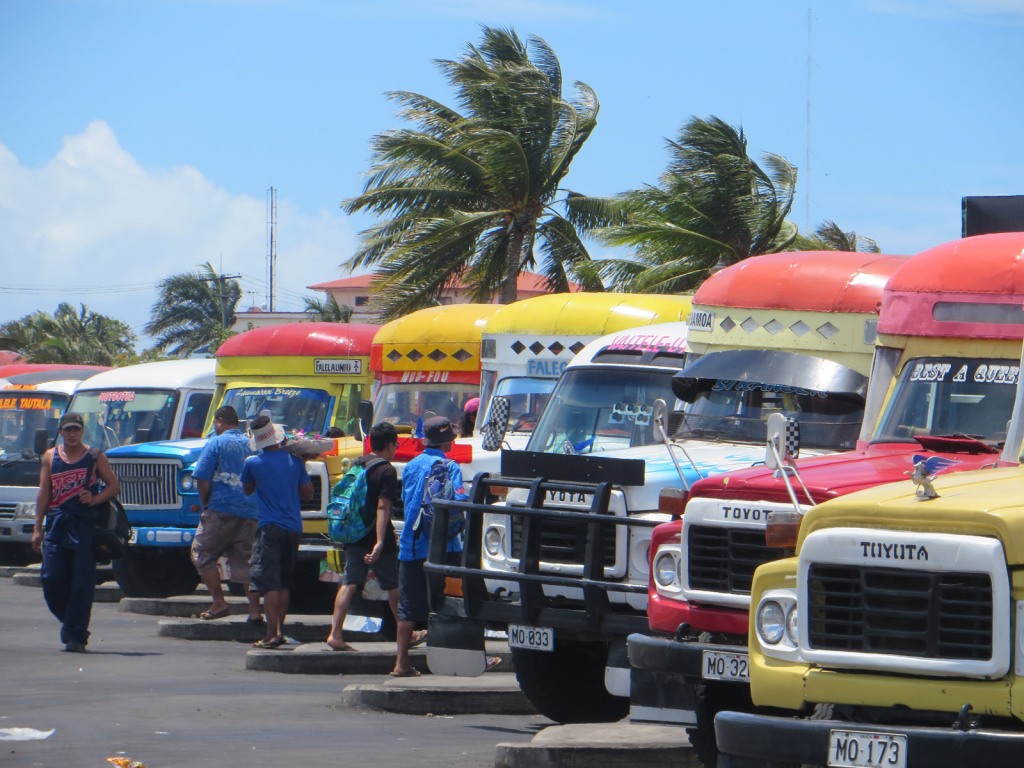
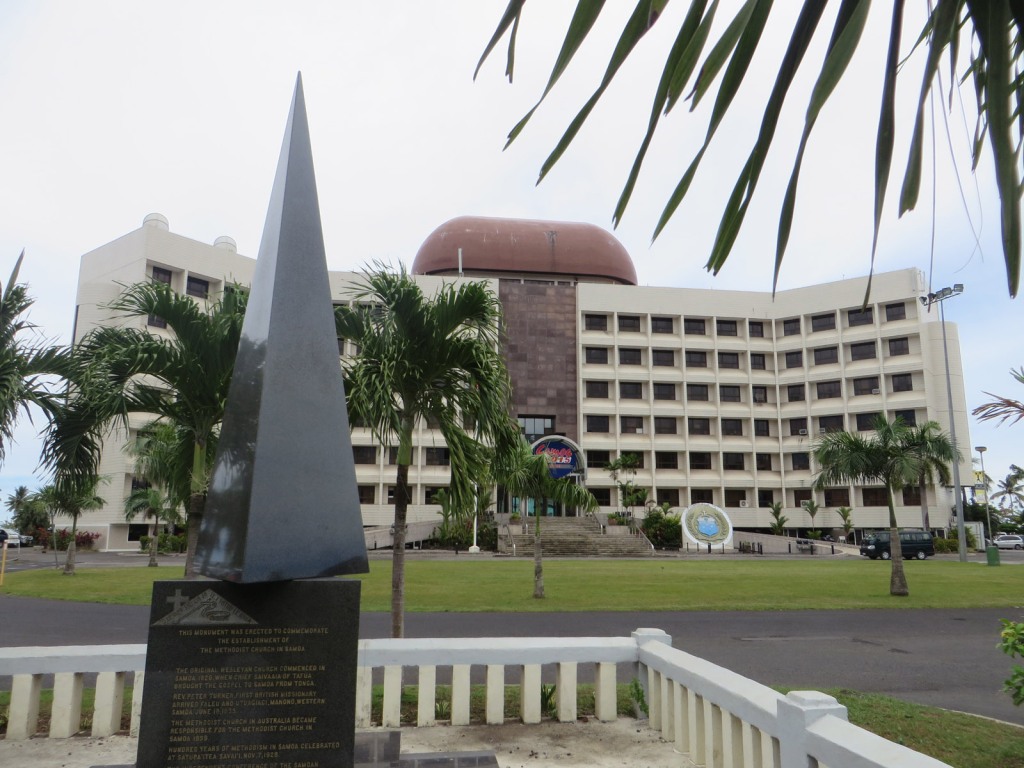
The distinctive form of the Samoan Government Building can be seen on the Beach Road, just along from the clock tower.
The central flea market was well ordered, clean and welcoming, much like Samoa itself.
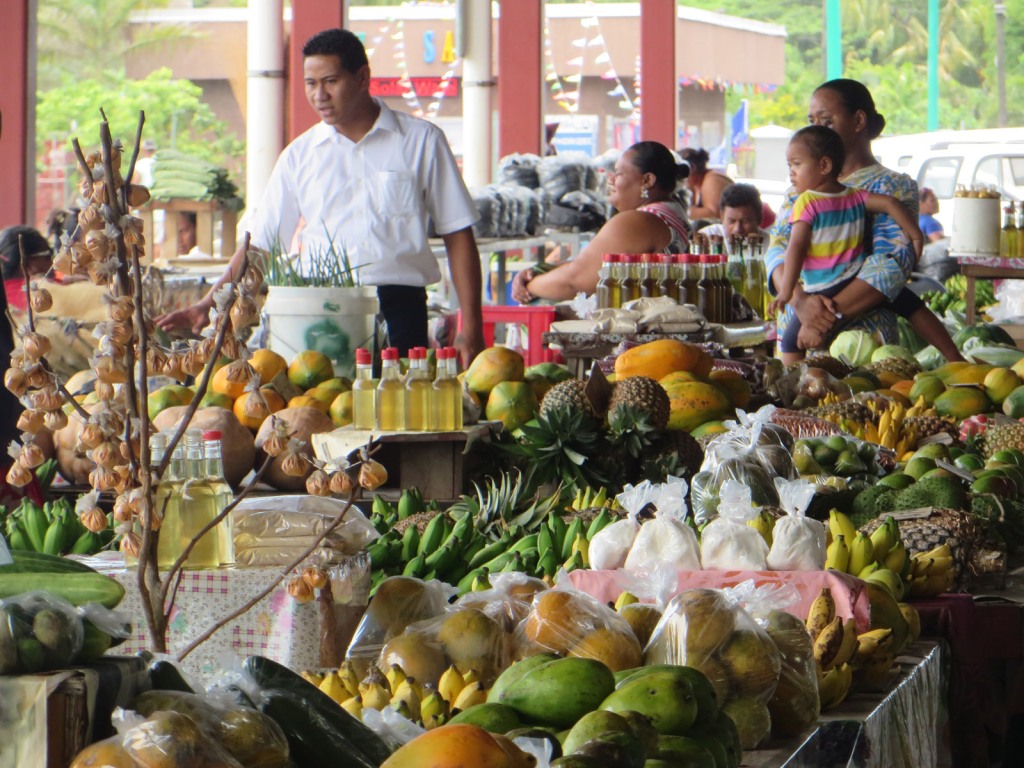

Traditional ceremonial axes for sale in the market, the must-have gift for anyone looking to bonk their dinner on the head, before hooking out the good bits.
Colourful south Pacific textiles for sale in central Apia.
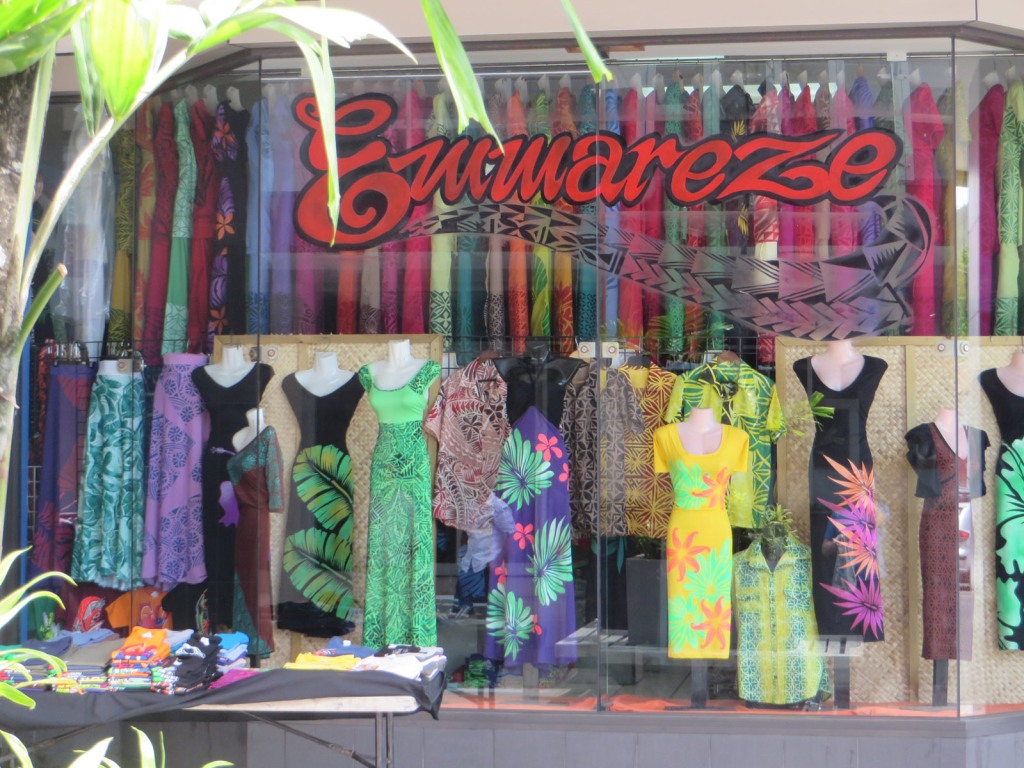
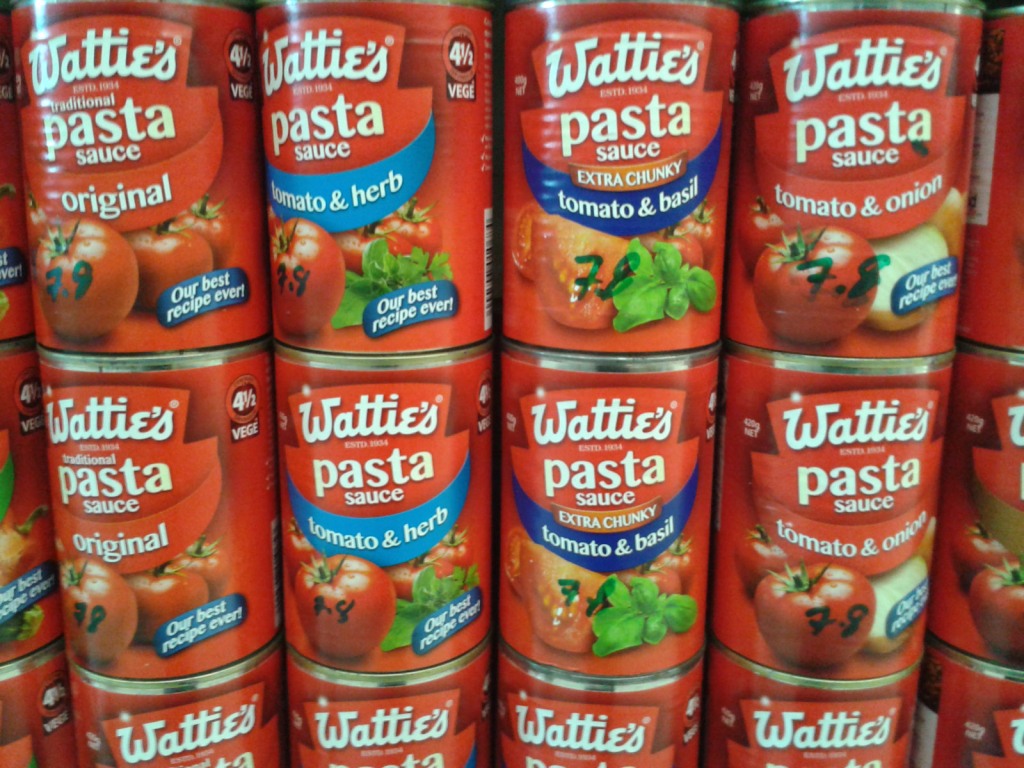
Samoa may be in the middle of the south Pacific, but it’s heavily influenced by New Zealand, and one of their most famous ranges of tinned products. I have yet to try Wattie’s pasta sauce or baked beans for myself, though.
A wooden sculpture representing the end of cannibalism in Samoa – after King Malietoa was tricked by his own son into almost cooking him, an end was declared to the practice – or so the legend goes.
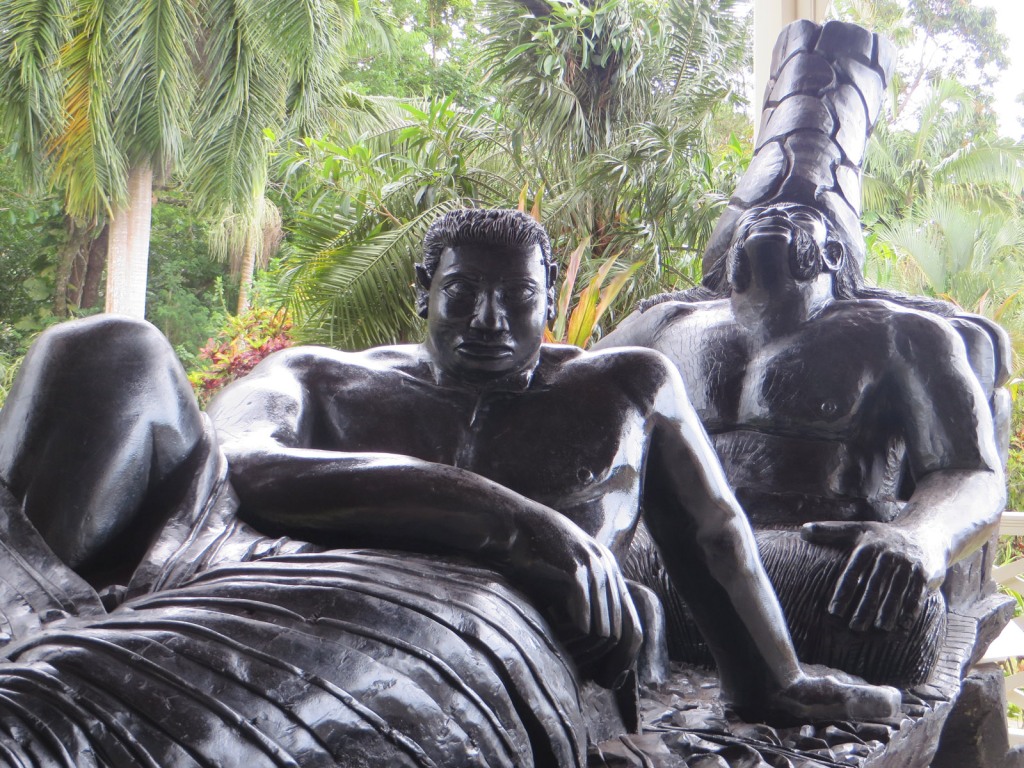
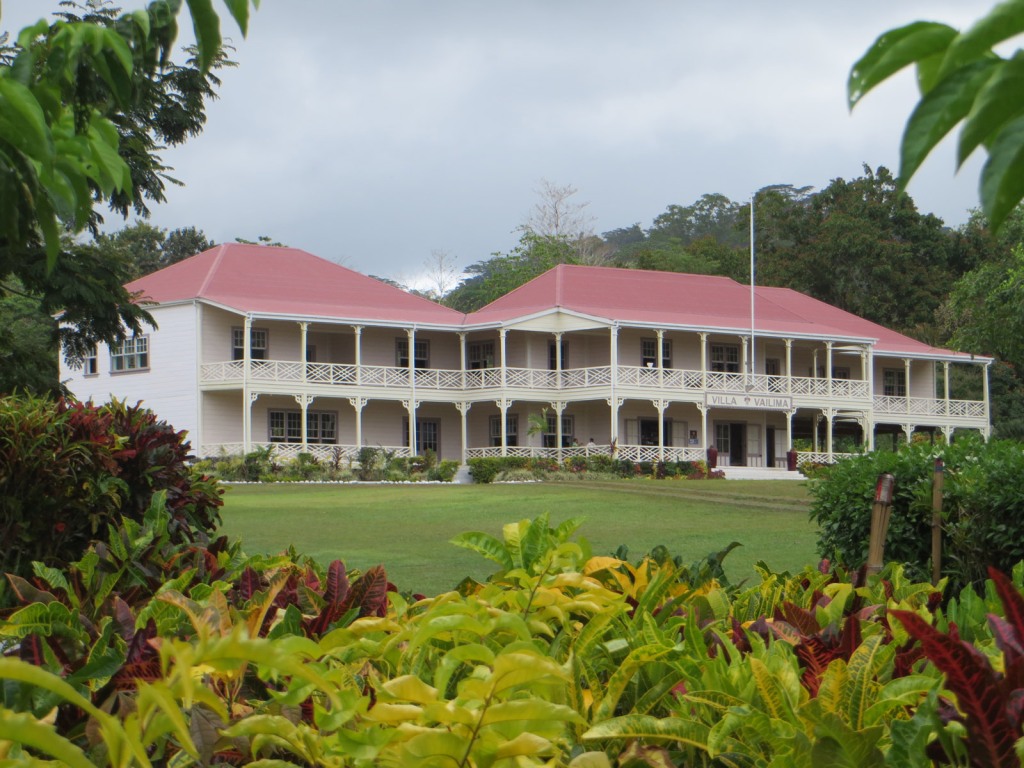
Villa Vailima on the outskirts of Apia, was the final home of Scottish author Robert Louis Stevenson, until his death in 1894.
Stevenson himself, presiding over the living room of his house, which now operates as a museum.
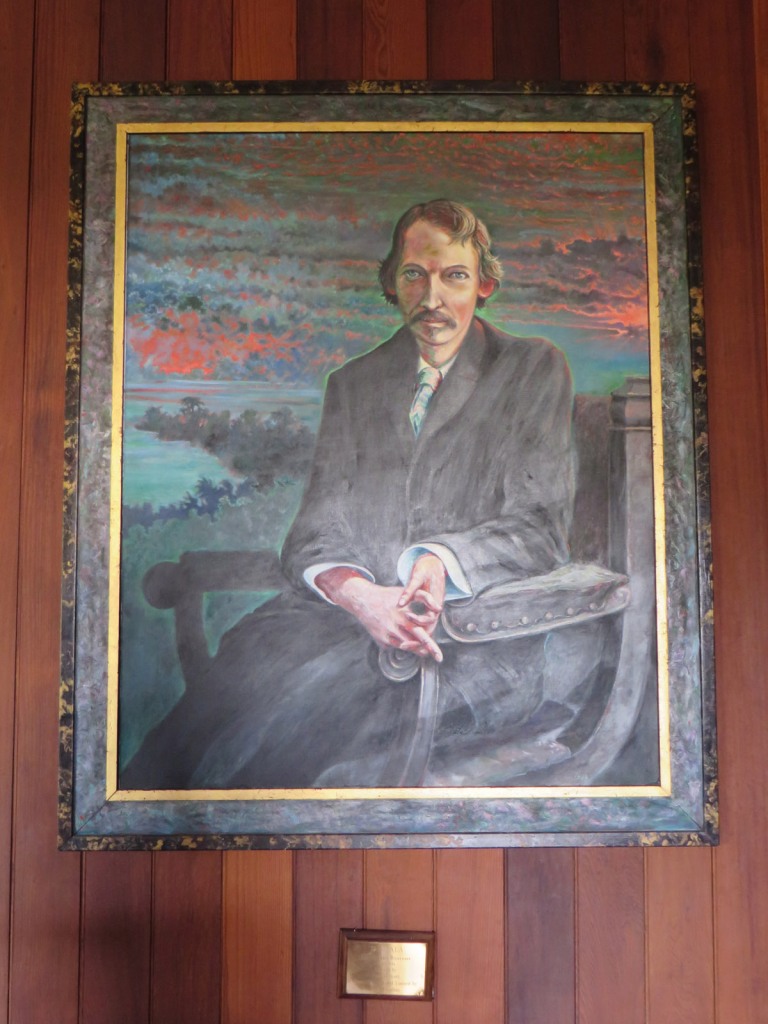
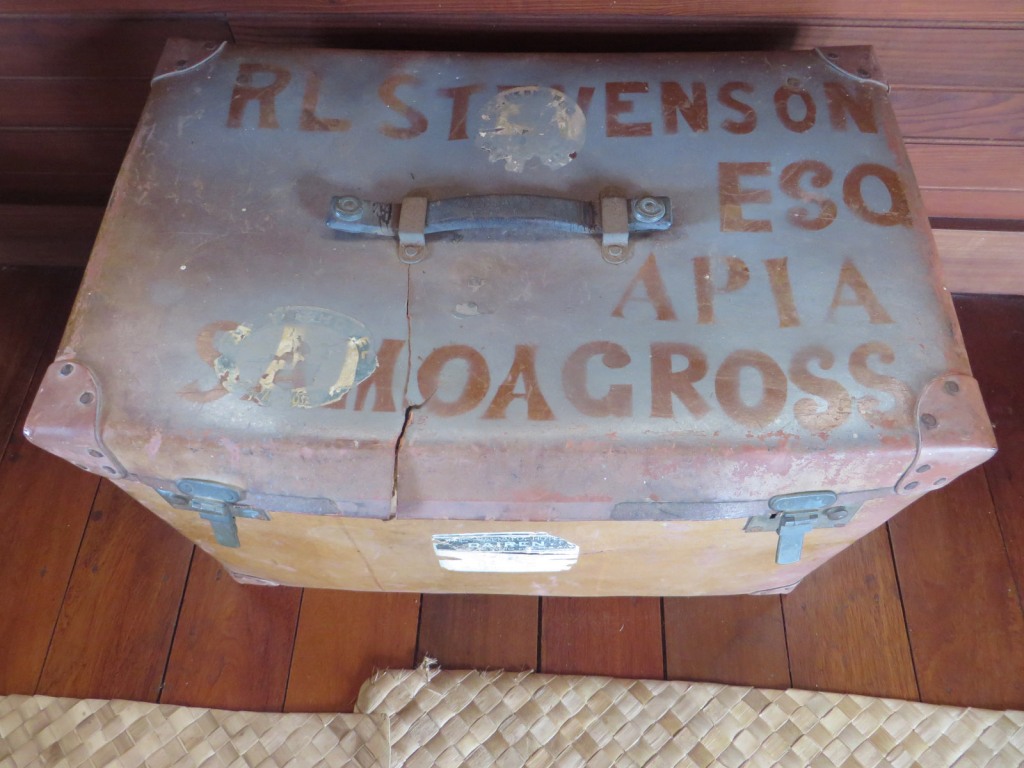
One of Stevenson’s suitcases, marked for the journey to his new home in Apia. Stevenson was born in Edinburgh but moved to the south Pacific for the good of his health, unfortunately dying just five years later at only 44.
Stevenson was buried on a hilltop on the grounds of his estate, overlooking the Pacific. As all Scottish visitors to the island should do, I hiked up to the summit to pay my respects.

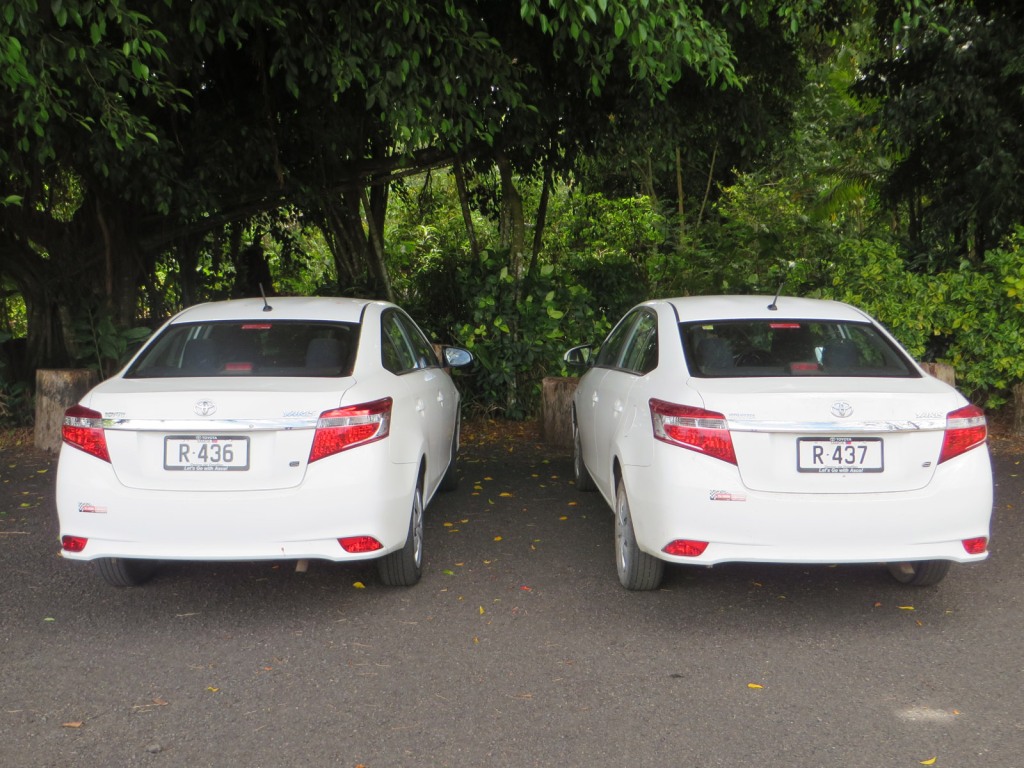
Returning to my car, I found that another visitor to Villa Vailima had the good sense to rent the same make and model as I had. And with a license plate only one digit apart. There aren’t many rental cars here.
One of the Samoan government buildings on the Mulinuu Peninsula, which hosts a scattering of administrative buildings and monuments. New Chinese-funded construction was in progress nearby.


A monument to Samoan independence from New Zealand in 1962, having been a German colony for the first fourteen years of the 20th century. The inscription declares that “Samoa is founded on God”. Until 1997, the country was called Western Samoa – the name change irked nearby American Samoa.
Created 2018 | Updated 2023
